There are many different advantages to mountain biking that draw people to the sport in general. Not only can it get a person in great shape, but it helps to build muscles and really start to craft the body the way many people want to look.
While there are definitely muscles used riding a mountain bike, people may not know exactly what muscles they are. This is a closer look at all the different muscles mountain biking helps build-up to allow people to be as strong and as powerful as they would like.
Also, we later take a look at how a person can build muscle to be a strong mountain biker in general. Those wanting a more defined look thanks in large part to being on the bike can learn a lot.
Even though it might seem like the most basic answer for muscles used in mountain biking, the legs in general get the brunt of the work.
However, it is much more scientific than that. Not only are there a lot of different muscles in the legs that are used, but the rest of the body gets a pretty good workout as well.
Quadriceps
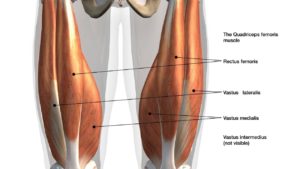
The quadriceps are mainly utilized for mountain bikers when pushing the pedal down towards the ground. Most mountain bikers, or any bikers in general, have pretty large quadriceps for this reason.
They must be able to withstand hours and hours of this in some situations, so the muscles are obviously going to grow a bit.
Because of the heavy use, quadricep pain and cramps are somewhat prevalent. The good news is that the quadriceps are pretty strong by default, so it takes a lot for there to be injuries in this area.
They are not exactly the most vulnerable muscles in the body. (Source)
Calves
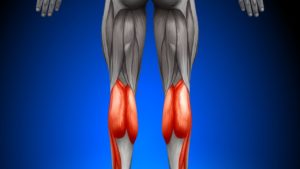
The calf muscles are going to work against quads during the pedaling process. When operating the bike, the calf muscles help to bring the foot back upward so that it is in a better position.
It might not be as strenuous of a job for the calf muscles, but it is part of the rotation process to complete a pedal stroke.
Calf muscle pain is usually a bit more prevalent in all sports, so make sure to probably stretch it out and have it prepared for any length of ride.
With poor technique, there could be some pain in the calf area due to overworking as well.
Hamstrings

The hamstrings for a mountain biker are used to some degree, but they are not under the same type of stress as they would be when running or doing many other exercises.
That is good news for a lot of people because many come to biking in part because they do not have hamstrings that are completely healthy.
The hamstrings are going to work directly with the calf to help pull the leg up during pedaling. On some trails, this can be a little more difficult than others, but the hamstrings will start to build up in strength pretty quickly and allow for this workout.
Make sure to properly stretch them as much as possible, especially if someone’s coming from a hamstring injury of any kind.
Buttocks
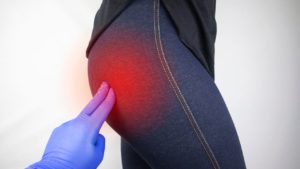
Mountain biking works out the buttocks muscles because it is in charge of moving the thigh forward and keeping every rider stable during the entire exercise.
It is important to be stable in any exercise, but specifically one balancing on two wheels. The balancing act is a pretty good workout since different trails are going to require different focuses, so it must be strong to withstand everything.
Abdominals

A strong core is necessary to be a quality mountain biker. The more a person rides, the stronger they will get in their abdomen area.
Mountain biking does a great job of building muscle in this area, which is going to make many people feel confident that they are moving in the right direction.
Since people want to make sure they have a pretty strong core before starting, they might want to do a few exercises with the abdominal muscles at first.
This will ensure that there are no stability issues while on the bike, and it will give confidence to riders that they are doing things the right way. (Source)
Rectus abdominis
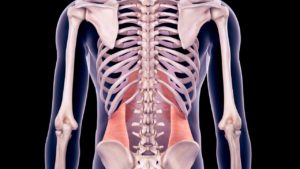
Just like with the added muscles below, all these core muscles work together in order to stabilize the body as much as possible.
The biker needs to stabilize whenever going up or down in elevation, or turning for that matter. The rectus abdominis gets an outstanding workout with this.
Biceps
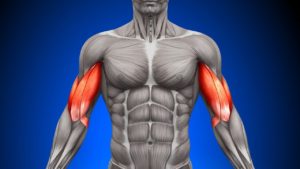
Building up muscle in the bicep area might not be something that people think about when they first hop on a mountain bike.
The truth of the matter is, biceps are going to help stabilize anyone riding for a long amount of time.
Not only that, but riders will build stronger biceps by lifting and pulling the handlebars. It might not seem like much, but it does in fact occur.
Triceps
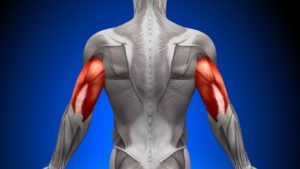
Much like biceps, triceps are very helpful in stabilizing a rider when they are going on different terrains. Specifically, triceps really come in handy during descends.
Not exactly convinced that this is the case? Simply look down at the arms and see the type of flex that they have in them. This will tell people exactly what is going on as they hold on during their ride.
Forearms
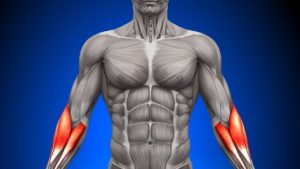
Forearm stay pretty busy when mountain biking. There are a lot of people who notice that they start to build muscle thanks to all the breaking, shifting, and overall gripping on the handlebars.
It is not uncommon for a lot of bike riders to see their forearm start to build considerable muscle the longer they ride.
This is something that doesn’t exactly bulk up to much with other types of riding since there is not as much impact on the ground, but it is something to keep in mind.
Simplifying the Pedalling Process
With each pedal cycle on a mountain bike, there is the power phase, and the recovery phase. Each phase works different muscles, and the legs need to be working together at a solid rate for everything to work as it should.
The best way is to think of it as a complete circle. That is how people will understand The complexity of peddling.
Power Phase
Peddling starts with the gluteus maximus starting at the very top of the peddling motion. It is extending the hip during this range, and goes to about a 45°.
That is when hamstrings join in and work together from 45° to 125°. Also during the power phase are a few of the main quad muscles that will carry through during a lot of the tougher parts of the peddling.
Finally, the soleus muscle in the calf helps to finish off the power stage.
Recovery phase
The recovery process during the paddle cycle are still important, even if they are not doing as much work overall.
For example, strong hip flexor muscles such as the iliopsoas Will become stronger and stronger as it helps to flex the thigh during recovery stage.
Other muscles are also and play including the calf muscles and shin muscles so that the foot is in place to provide power once again.
How Can You Build Strength, Endurance, and Overall Fitness for Mountain Biking?
Building muscle from rides themselves is one thing, but what about people who want to build up strength so they can become better that mountain biking in the long run?
The good news is that there quite a few ways to go about this, and allows people to see results pretty quickly.
Some will do this because they are only certain times a year they can go mountain biking. Others just want to vary up their work out a little bit, so training for mountain biking in other ways can could be beneficial.
Lifting Weights
Building up strength that will work for mountain bikers is a huge step in the right direction for a lot of people out there.
Maybe people gotten a mountain biking in the first place because they want to avoid the gym, but it is necessary to go if you times a week to get muscles to another level.
There should be a lot of work with dumbbells, mostly because it helps build up strength and allow for some stability.
A lot of different exercises are going to focus on both at the same time, which will mimic what is needed to be a successful rider on the bike.
Lifters don’t need a ton of weight with their arms, as that is more about working on flexibility and movement with the upper body. Working on external rotations, lateral raises, and pull over exercises will be a great place to start.
With legs, there is always going to be some focus on strength, but stable strength is important.
The Bulgarian split squat is always a great option for mountain bike riders, as it will help to build strength everywhere from the hip flexors to the hamstrings. This helps to create a lot more power on the bike and see an increase in success pretty quickly.
There also exercises I don’t require weight, such as like hops, squat jumps, and more. This is not going to necessarily pack on the muscle bulk, but it will make a difference in mountain bike riding.
Road Cycling and Bike Trainers
Building your endurance and your cardio by road cycling is a great way to slowly build muscle and strength. I use a bike trainer along with Zwift to build up muscle and endurance.
I’m much faster and can ride longer distances before getting tired simply by getting on my bicycle trainer and riding 20 – 30 kilometres a day (12-18 miles)
Rest and recover
The only way riders will start to add muscle to their body and see a significant change of role is if they are willing to take some recovery days.
As hard as it sounds times, recovery is a big part in letting the body heal and the muscles grow as they should.
There are a bunch of tiny tears in the muscles every single time someone pushes themselves and has a good work out. The body needs repair to build muscle, which is why it’s so important to take some time off.
That doesn’t mean that a person has to sit completely still and not do anything. There are plenty of ways to rest and still benefit, such as working on stretching, going on a light run, or doing some other type of exercise.
Yes, a person can even go on a very light ride if they absolutely have to.
Easier to Build Muscle Riding Uphill?
One of the most challenging things about riding a bike is going uphill. Riders must put in a ton of effort to climb, even if they are adjusting the gears they are currently in. Is it easier to build muscle and running uphill?
The answer is a little tricky, as muscle activity for both the upper and lower body when riding at different elevations will stay roughly the same when in the saddle.
The difference comes when a person has to get out of the saddle and stand to pedal. Not only will the glutes and abdominal muscles work a lot more in the situation, but it shows that there is a lot of hard work in putting along the way.
At the end of the day, hard pedaling at any steepness is going to be a hard workout. Do not feel like it is completely necessary to go find a bunch of hills to climb, because ultimately, it is not going to make a huge amount of difference.
It feels like a person is going faster and harder climbing, but a rider can put that same amount of effort in on flat ground.
Conclusion
Mountain bike riding is not going to bulk people up like many other exercises out there, but that is usually not the goal for the vast majority of riders anyway.
Instead, they just want to have stronger muscles overall, and if they can be a little more defined, that really helps them stand out as well.
Without question, going on mountain bike rides numerous times a week will definitely make a change in a person’s body. Not only will they slim down and get rid of excess fat, but their muscles can start to show as much more defined than ever before.
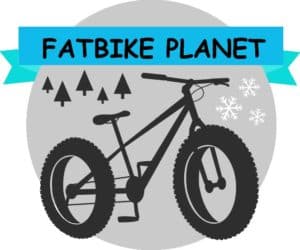
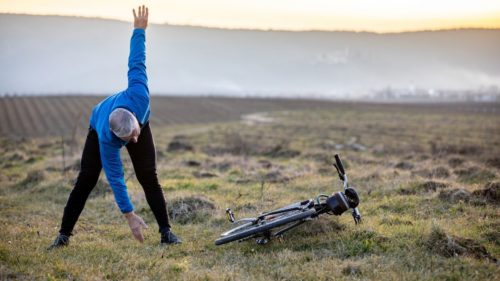
One thought on “What Muscles Does Mountain Biking Build? All The FACTS!”